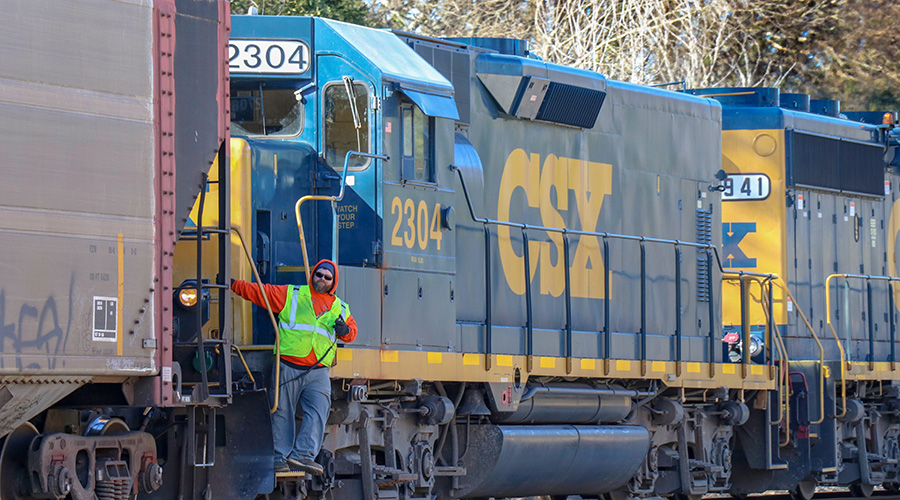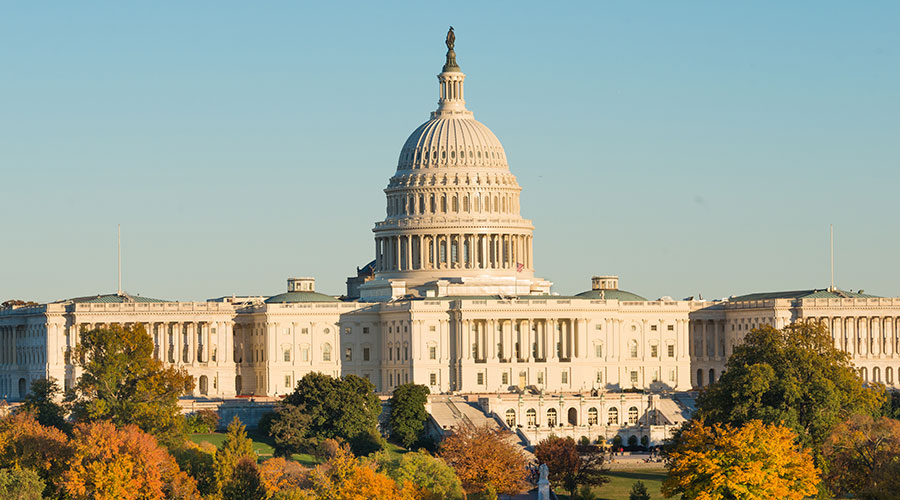Most wanted: Safety improvements aimed at saving rail workers’ lives
5/11/2021
By Julie Sneider, Senior Associate Editor
The National Transportation Safety Board (NTSB) added rail-worker safety to its latest Most Wanted List of safety improvements in response to a “significant number” of rail employee deaths that have occurred on the job over the past year, including 10 since October 2020.
Rail-worker safety has always been a concern for the agency’s board members and investigators, NTSB member Thomas Chapman said in an interview with RailPrime. Fifty-five rail workers have been killed in 52 accidents since 1997, the year the Federal Railroad Administration (FRA) implemented roadway worker protection regulations, he said.
“We have had 10 just in the past year that we’re investigating, so that’s a long-term trend that’s troubling and seems to be getting worse,” said Chapman. “We have too many folks who are losing their lives unncessarily, and we think there needs to be more emphasis on this issue.”
In early April, the NTSB unveiled its list for 2021-22, the first time the agency approved a list of transportation safety improvement priorities for a two-year — versus a one-year — period. Also for the first time, “Improve Rail Worker Safety” was on the list, but the agency only recently provided details of that recommendation.
The recommendation addresses two categories of rail workers: roadway workers, or those who maintain track; and operations and mechanical crews.
“Too many people working on or around railroad tracks, such as train crews, maintenance-of-way employees, and mechanical workers, are getting killed or injured in preventable accidents involving train or equipment movement,” agency officials wrote. “Many of these workers were conducting routine maintenance or switching operations when they were struck.”
Investigators continue to detect certain recurring safety issues in their accident investigations.
“We think there is a significant weakness with respect to train approach warning systems (TAW),” said Chapman. “That’s a single point of failure approach to safety. It’s a very rudimentary methodology for keeping workers safe. We think there’s the need for redundancy there.”
TAW systems are vulnerable to human errors, such as miscalculating site distance and generally underestimating the time needed for workers to clear tracks, NTSB officials noted on the agency’s website.
“We have long been concerned with the risks of using these systems as the primary form of worker protection, especially because they lack safety redundancy. Trains travel at deceivingly high speeds, and without proper warning, workers may not have enough time to react,” the website states.
The board recommends that both the FRA and Federal Transit Administration (FTA) — which has yet to establish specific regulations covering roadway worker protections — require railroads to implement technology to provide safety redundancy for roadway workers.
Another recurrent issue agency officials find in their investigations: the need to ensure job briefings are done correctly and procedures are in place to audit those briefings. Watchmen and lookout workers should also receive the proper training and have the required equipment, and develop work schedules that prevent fatigued workers from working overtime.
Addressing the space between crews and cars
When it comes to protecting the safety of operations and mechanical crews, one area NTSB investigators see as needing attention is the spacing between train crews and rail cars that transport hazardous materials. Although the federal Pipeline and Hazardous Materials Administration (PHMSA) requires buffer cars between rail crews and hazardous materials, that agency has issued a rule interpretation that provides for a shorter distance between the materials and crews.
NTSB wants to see the amount of distance increased to no less than five cars be used as a buffer between crews and “highly hazardous flammable material,” at least until PHMSA determines the appropriate separation distance to keep rail crews safe.
“We think the FRA, FTA and PHMSA need to establish adequate road worker and operational crew protections,” Chapman said. “We think if they don’t address these deficiencies, we’re going to continue to see accidents and incidents that result in worker deaths.”
Rail-worker safety is the only item on the 2021-22 Most Wanted List that addresses the railroad industry specifically. The concern was brought to the board’s attention by the NTSB’s rail accident investigation team after detecting trends in recent years.
Among them: In January 2017, the NTSB investigated an accident in which two BNSF Railway Co. roadway workers were struck by a train and killed while working on the Black Hills subdivision in Edgemont, South Dakota. A three-member roadway work group had been clearing snow and ice from the track switch on the main track to prepare for the movement of a train that was to have its air brake system tested in a stationary test on the main track. The crew of the BNSF westbound train sounded the train horn and bell, and both members of the train crew applied emergency braking. However, there was no response from the roadway work group, and the train was unable to stop before reaching their work location, according to the NTSB report.
The agency determined the accident’s probable cause was the improper use of the train approach warning by the BNSF roadway work group. Adding to the incident was incorrect information that had been provided in a job briefing.
Tim DePaepe, an NTSB railroad accident investigator whose specialty is signal systems, told RailPrime he hopes railroads will install positive train control (PTC) technology on high-rail vehicles in order to protect maintenance-of-way (MOW) workers.
“Roadway workers inspect the tracks and signalmen inspect the signals, and currently when they're out there [doing those inspections], they’re not protected within the PTC system,” said DePaepe. “And some of the accidents we've investigated involved trains hitting high-rail vehicles or they’ve hit workers on backhoes. We want the industry to eventually put that technology on the high-rail vehicles — the backhoes and MOW equipment.”
To that end, the NTSB made that recommendation to railroads even prior to adding Rail Worker Safety to the Most Wanted List.
“As a technology, PTC has been rolled out and it’s proven,” and the NTSB believes its use will be expanded over time to protect more individuals, said DePaepe.
The NTSB uses its Most Wanted List to advocate for measures that will improve the safety of transportation systems for the people who use them and work in them. The listed improvements are an outgrowth of the agency’s “lessons learned” from accident investigations and conclusions.
“We are looking forward to working with the railroads and the labor community,” said Chapman. “We hope that our focus will result on some positive trends now and into the future.”

